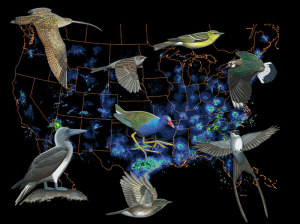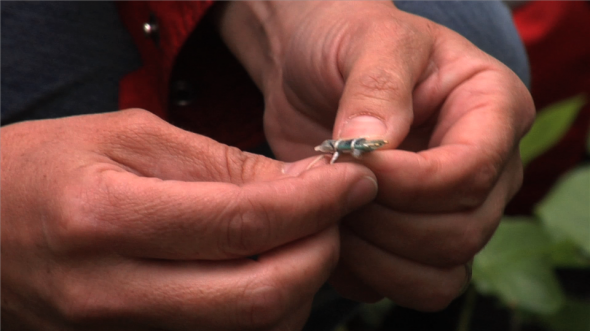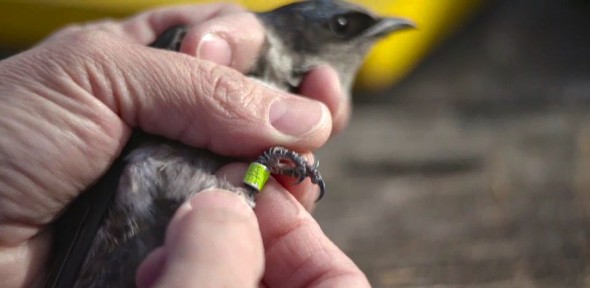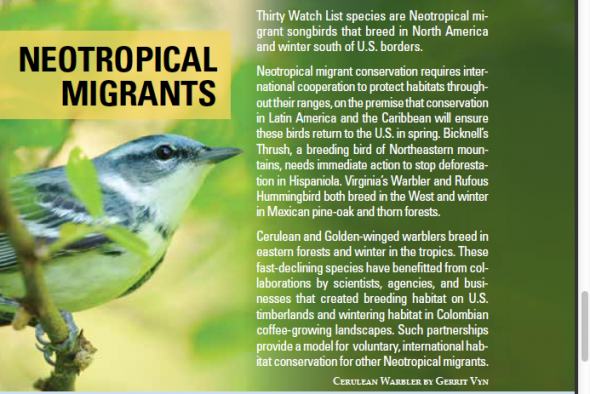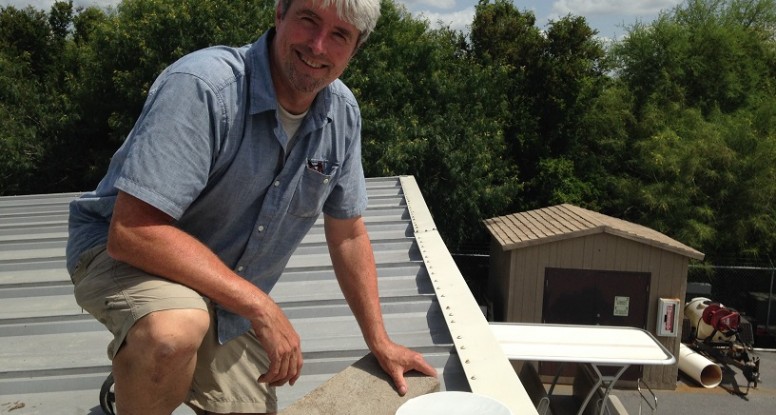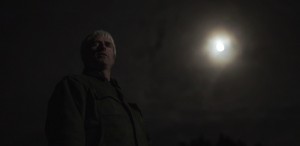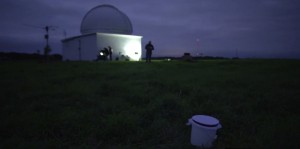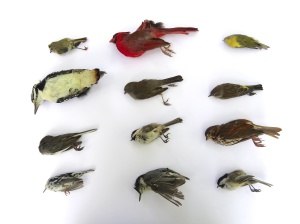 Michael Mesure, founder and Executive Director of the FLAP bird rescue organization, which is featured in SongbirdSOS says that many citizens of the city of Ottawa (Canada’s capital city) were shocked and troubled when a flock of approximately 30 Bohemian Waxwings collided with a glass walkway at their City Hall last year. The sudden and public death of these beautiful birds drew a frenzy of media attention and the interest of the Ottawa Field-Naturalists Birds Committee.
Michael Mesure, founder and Executive Director of the FLAP bird rescue organization, which is featured in SongbirdSOS says that many citizens of the city of Ottawa (Canada’s capital city) were shocked and troubled when a flock of approximately 30 Bohemian Waxwings collided with a glass walkway at their City Hall last year. The sudden and public death of these beautiful birds drew a frenzy of media attention and the interest of the Ottawa Field-Naturalists Birds Committee.
One member in particular, Anouk Hoedeman, was concerned by this event and started on the search for a solution. Although it is rare for an entire flock of birds to hit as in this incident, it is altogether too common for birds to collide with building windows. It is estimated that up to 1 billion birds die from window collisions each year in North America alone.
Most people have had an experience at home, at the cottage or even at work where they have witnessed a bird dying in this way. These experiences are upsetting and scary, often because people do not realize why birds collide with windows or what can be done to prevent it.
The sheer scope of this issue was brought to the attention of Sarah Kirkpatrick-Wahl at Nature Canada with the release of a series of scientific papers released by Environment Canada in Fall 2013 on the major human causes of bird mortality.
Anouk and Sarah’s separate searching lead them both to FLAP. (Fatal Light Awareness Program) Over the years, FLAP Canada has received calls from the Ottawa region about birds that have been found, but Mesure knew something was different this time around. Anouk and Sarah were put in touch and started meeting with others who were interested in finding a solution, including staff at the Ottawa Valley Wild Bird Care Centre.
In SongbirdSOS, Michael Mesure states that due to a recent precedent setting court case in Toronto, it is now illegal for buildings to knowingly attract and cause the death of birds in Ontario. He says “We’re excited about this new wing of FLAP volunteers gathering in Ottawa so they can make a difference for local and migrating bird populations. Ottawa is a dynamic growing city on the banks of an important river system which is a natural migratory bird pathway. With the increase in new building development , incidents of bird collisions have increased. It is not surprising that environmental concerns are arising because of this too.’’
This past spring, Anouk and another volunteer, Cynthia Paquin, began daily patrols in the downtown core of the nation’s capital. They found that the majority of collisions occurred after sunrise, with more birds hitting when it was bright and sunny. Their first season of patrols confirmed a problem with window strikes, so Anouk, Sarah, Cynthia and others began earnest efforts to establish a local FLAP program. This fall, they began building a more solid base of patrollers and drivers to help their efforts.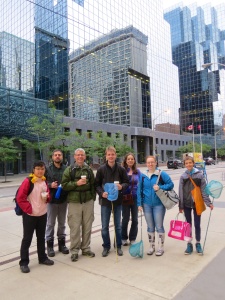
To date the Ottawa Wing of FLAP has recorded more than 300 birds representing about 60 species, including 20 warbler species and threatened species such as Wood Thrush and Canada Warbler. Species collected range from Ruby-throated Hummingbirds to a surprising Barred Owl.
Although many of the birds are found dead, Ottawa Wing volunteers are always thrilled to be able to rescue a stunned or injured bird and have managed to rescue dozens of warblers, kinglets, Brown Creepers, sparrows, woodpeckers and more. They already have a Facebook page https://www.facebook.com/FLAPOttawa and on it they have been posting some successful bird rescue videos.
As word spreads about FLAP volunteer efforts in Ottawa, more calls are coming in about injured and dead birds from office workers and homeowners. The group hopes the attention will get more people involved in this critical bird conservation initiative in Ottawa. You can contact them at Ottawa@flap.org or 613-216-8999. http://www.flap.org/ottawa.php
If you want to find out when the SongbirdSOS film featuring the bird rescue work of FLAP will be coming to a movie screen near you, please sign up for our newsletter.
Photos courtesy of Anouk Hoedeman
